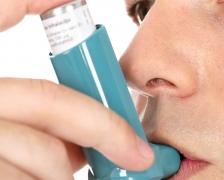[dropcap style=”font-size:100px; color:#992211;”]A[/dropcap]nother ‘France Surrenders!’ moment as the scientific community comes up with studies to tell us what we already knew.
Exposing your kids to household dirt can help their immune systems avoid asthma later on. Your granny knew that. The bonus is that, with just the right type of flannel rompersuit, they can buff and polish as they go.
Infants exposed to rodent and pet dander, roach allergens and a wide variety of household bacteria in the first year of life appear less likely to suffer from allergies, wheezing and asthma, according to results of a study conducted by scientists at the Johns Hopkins Children’s Center and other institutions.
Previous research has shown that children who grow up on farms have lower allergy and asthma rates, a phenomenon attributed to their regular exposure to microorganisms present in farm soil. Other studies, however, have found increased asthma risk among inner-city dwellers exposed to high levels of roach and mouse allergens and pollutants.
The new study confirms that children who live in such homes do have higher overall allergy and asthma rates but adds a surprising twist: Those who encounter such substances before their first birthdays seem to benefit  rather than suffer from them. Importantly, the protective effects of both allergen and bacterial exposure were not seen if a child’s first encounter with these substances occurred after age 1, the research found.
rather than suffer from them. Importantly, the protective effects of both allergen and bacterial exposure were not seen if a child’s first encounter with these substances occurred after age 1, the research found.
Timing of initial exposure may be critical
A report on the study, published in the Journal of Allergy and Clinical Immunology, reveals that early exposure to bacteria and certain allergens may have a protective effect by shaping children’s immune responses — a finding that researchers say may help inform preventive strategies for allergies and wheezing, both precursors to asthma.
“Our study shows that the timing of initial exposure may be critical,” says study author Robert Wood, M.D., chief of the Division of Allergy and Immunology at the Johns Hopkins Children’s Center. “What this tells us is that not only are many of our immune responses shaped in the first year of life, but also that certain bacteria and allergens play an important role in stimulating and training the immune system to behave a certain way.”
[quote]Children free of wheezing and
allergies at age 3 had grown up
with the highest levels of household
allergens[/quote]
The study was conducted among 467 inner-city newborns from Baltimore, Boston, New York and St. Louis whose health was tracked over three years. The investigators visited homes to measure the levels and types of allergens present in the infants’ surroundings and tested them for allergies and wheezing via periodic blood and skin-prick tests, physical exams and parental surveys. In addition, the researchers collected and analyzed the bacterial content of dust collected from the homes of 104 of the 467 infants in the study.
Infants who grew up in homes with mouse and cat dander and cockroach droppings in the first year of life had lower rates of wheezing at age 3, compared with children not exposed to these allergens soon after birth. The protective effect, moreover, was additive, the researchers found, with infants exposed to all three allergens having lower risk than those exposed to one, two or none of the allergens. Specifically, wheezing was three times as common among children who grew up without exposure to such allergens (51 percent), compared with children who spent their first year of life in houses where all three allergens were present (17 percent).
In addition, infants in homes with a greater variety of bacteria were less likely to develop environmental allergies and wheezing at age 3.
When researchers studied the effects of cumulative exposure to both bacteria and mouse, cockroach and cat allergens, they noticed another striking difference. Children free of wheezing and allergies at age 3 had grown up with the highest levels of household allergens and were the most likely to live in houses with the richest array of bacterial species. Some 41 percent of allergy-free and wheeze-free children had grown up in such allergen and bacteria-rich homes. By contrast, only 8 percent of children who suffered from both allergy and wheezing had been exposed to these substances in their first year of life.
Source: Johns Hopkins Medicine
Photo: Freedigitalphotos.net/Marin

Some of the news that we find inspiring, diverting, wrong or so very right.




















